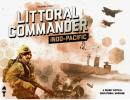Search
Using the filters to the left, click your selection, it will become bold and filter the results, click it again to remove that filter.
Dear Editor, I am writing to comment on the article by Dr Jason Mazanov regarding how to deal with the aftermath of toxic leadership which appeared in the autumn edition of the Australian Army Journal (vol. XV, no. 1). Whilst it is disturbing to discover that toxic leaders / workplace psychopaths have migrated from Australian corporate and government workplaces to the Australian Army, it is encouraging to see that this issue is recognised and debated. It is to be hoped that the Australian Army will …
The Australian Army operates as a total force, integrating personnel from a range of service categories (SERCATs) in order to generate the capabilities required to win the land battle. The re-introduction of the rank of 2nd Lieutenant for General Service Officers (GSO) whose ab initio training is the Part-Time Officer Commissioning Course (PTOCC), will enable superior alignment of foundation workforce capabilities across the total force, and create a cogent framework for the conditions-based development of …
The supreme art of war is to subdue the enemy without fighting. - Sun Tzu, The Art of War Gray zone conflict must be understood in fundamentally different ways from major warfare. - Michael Mazarr, Mastering the Gray Zone The international system, like any dynamic system, is always in a state of flux. Forces of change, whether we are conscious of it or not, are continuously shaping the environment inside and outside nations. Nations respond to these changes in different ways. One significant area of …
Abstract Emerging challenges that are beyond the capability and intent of terrorist actors will require changes to the Australian Defence Force (ADF) counterterrorism (CT) enterprise. The ADF has been developing specialist CT capabilities since the Sydney Hilton bombing in 1978, 1 and has applied these skills to pronounced effect in many international theatres, including East Timor, Iraq and Afghanistan. However, recent operations have seen a transfer of those skills from the special operations force (SOF) …
Culture is the deeper level of basic assumptions and beliefs that are shared by members of an organisation; that operate unconsciously and define in a basic ‘taken for granted’ fashion an organisation’s view of its self and its environment. - Edgar Schein Abstract The way the Australian Army uses the term ‘warfighter’ as part of its contemporary culture undermines its joint warfighting philosophy by generating disharmony between the elements of fighting power and the external environment. This ultimately …
Abstract Army’s ‘Accelerated Warfare’ framework promotes the notion of constant change, technological disruption, and the contest of ideas which ultimately should encourage us to innovate. Advanced manufacturing is one of many areas where we may be able to do this. At present, there is an inherent lack of organisational agility to design, prototype and test innovative proposals within Army. There are also some very real constraints in the supply chain, specifically getting quick access to repair parts, …
Abstract Army’s futures statement, Accelerated Warfare , describes a future operating environment that will be complex and uncertain. Uncertainty in the battlespace can be reduced through effective intelligence, surveillance and reconnaissance (ISR). Yet Army’s ISR capability has not been widely debated in the context of the future battlespace. The aim of this article is to prepare Army’s ISR capability for the challenges of an accelerating environment. Using an inside-out methodology, this analysis …
Abstract The Australian Defence Force (ADF) operates in an environment characterised by accelerating and converging change, set against an international context of cooperation, competition and conflict. To meet the Army’s mission of preparing for war, the organisation must undertake a holistic process of modernisation to anticipate the challenges of the future environment. Using available, emerging technology, Army can exploit opportunities to define the operating concepts, structures and personnel …
The political object is the goal, war is the means of reaching it, and means can never be considered in isolation from their purpose. - Carl von Clausewitz 1 Abstract The ‘levels of war’ is a doctrinal construct which describes the way political objectives are translated into military strategies which in turn guide tactical actions. Or at least that is what it should be. The operational level has been expanded and redefined over the last century by writers of Western doctrine. Unfortunately, the …
Author: Sebastian J Bae Dietz Foundation , 2022, 2-6 Players SKU: DTZ 2022-1-1 Reviewed by: Robert C Engen, PhD Wargaming is a fast-growing discipline within professional military education (PME). Much of my new job here at Deakin University’s Centre for Future Defence and National Security in Canberra involves wargaming for PME, and the Australian Army Research Centre has kindly provided a venue to review wargames relevant to PME and the Australian Army context. Littoral Commander is a …

